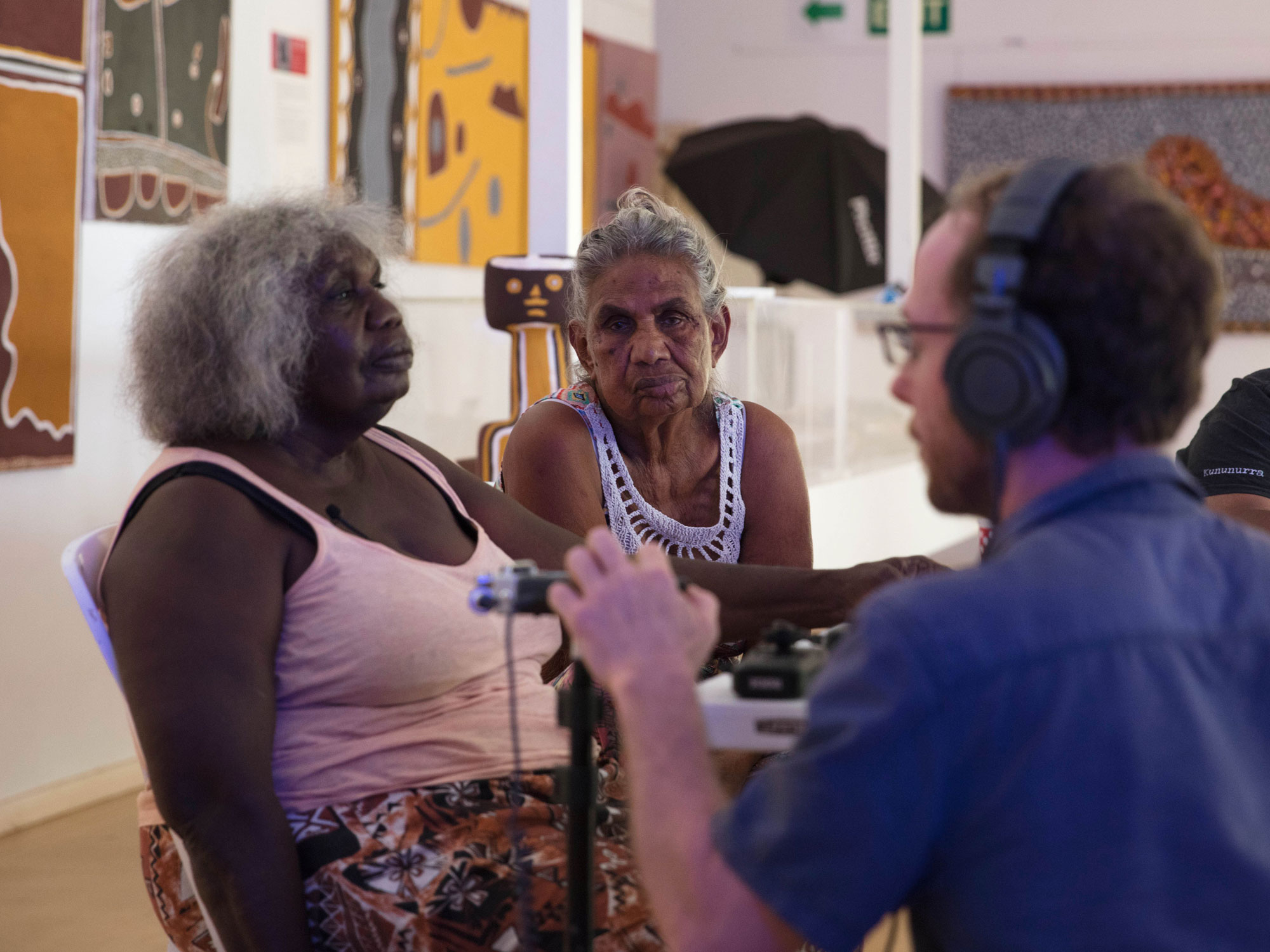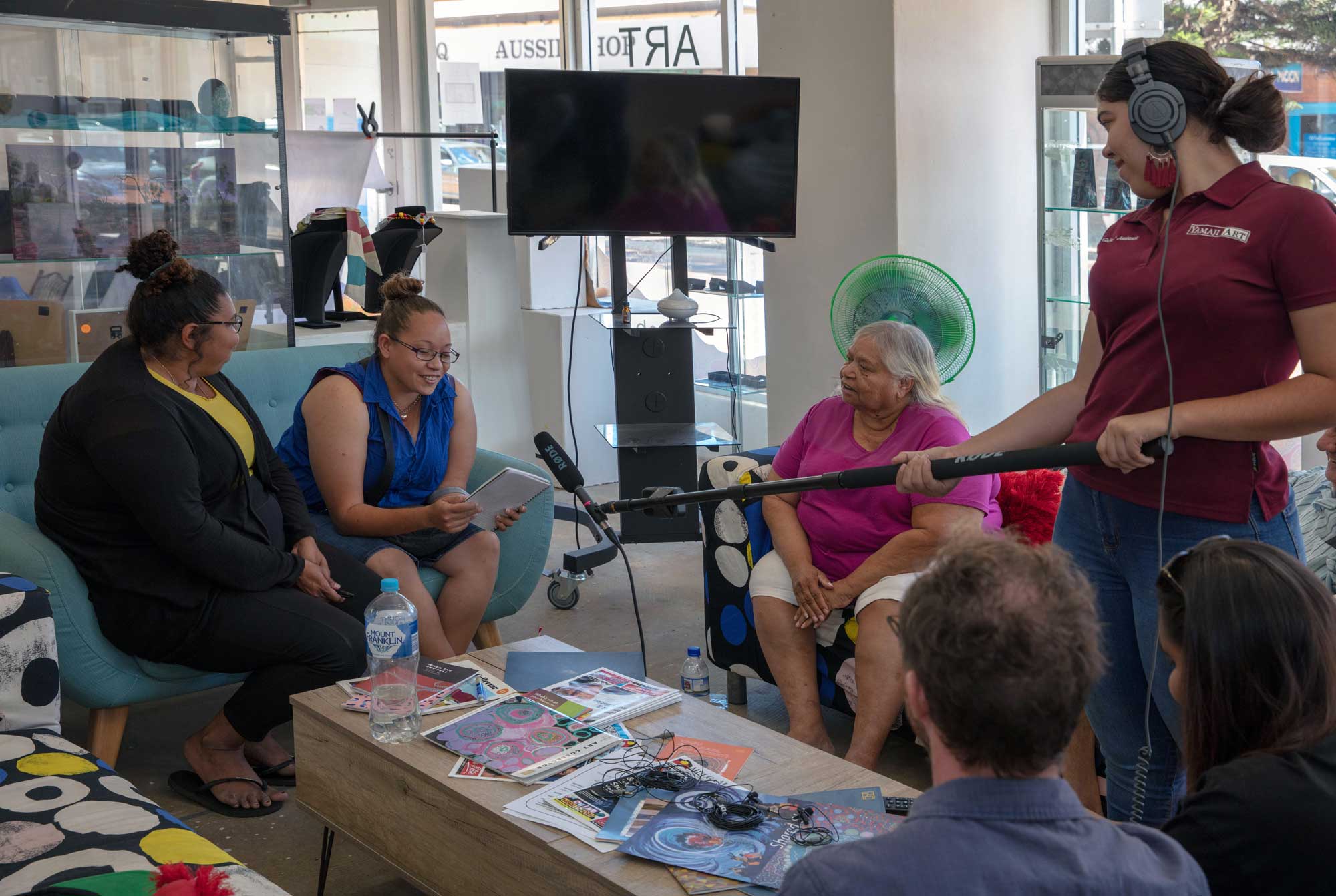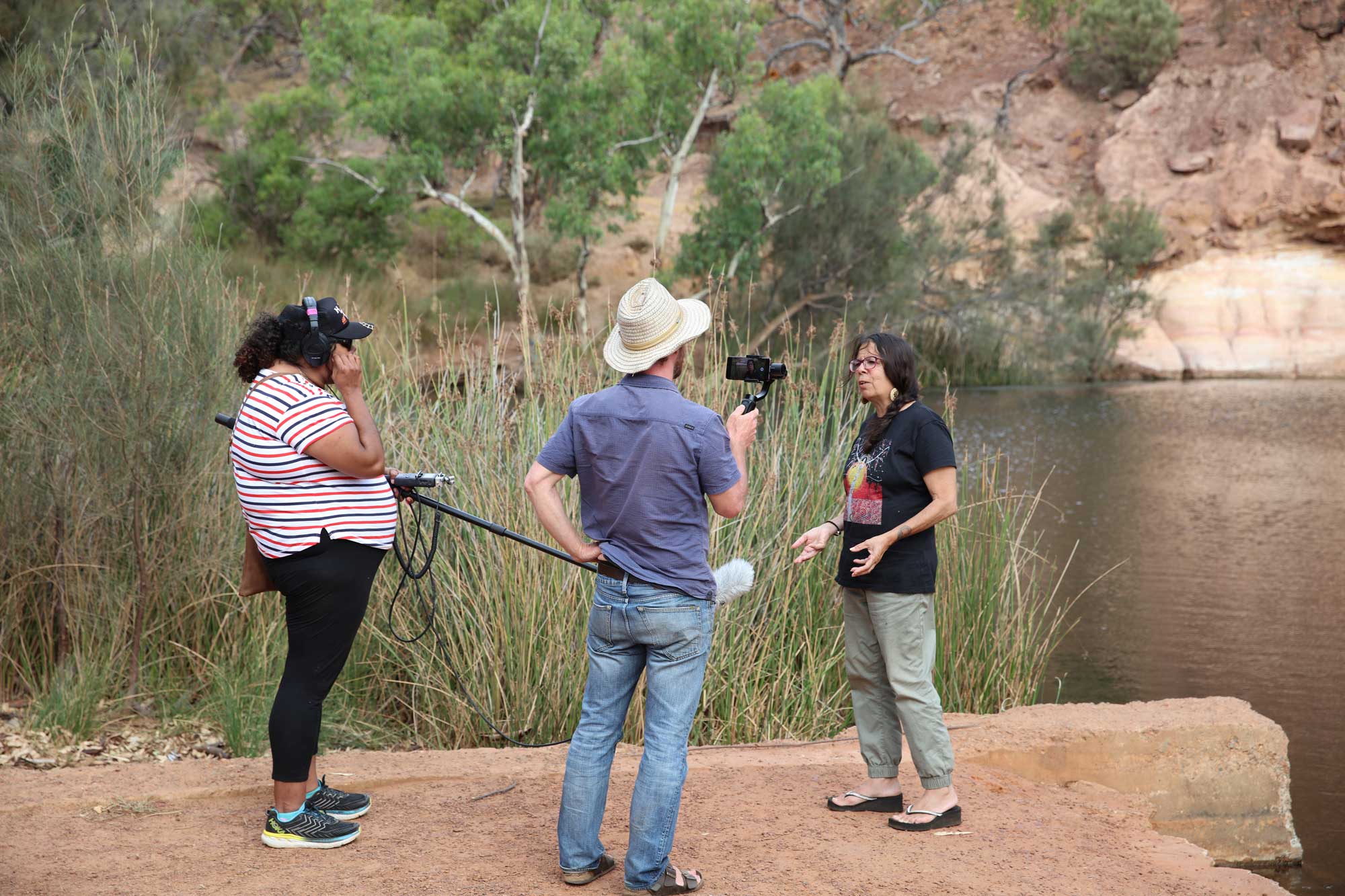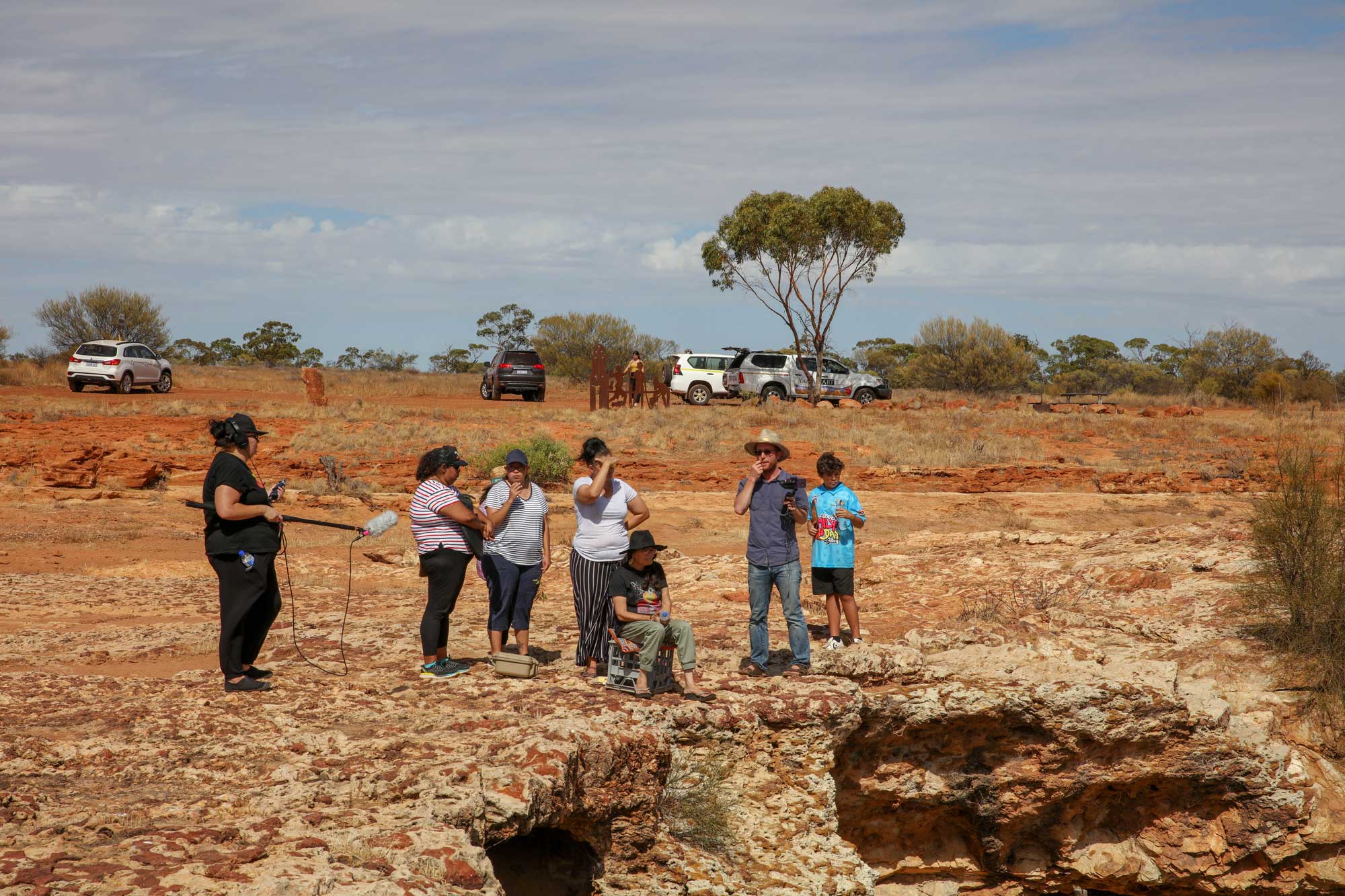This Indigenous Languages and the Arts Project was made possible through a grant awarded through the federal government Department of Communications & the Arts (Indigenous Languages and the Arts Program).
Project summary
This project (phase 1) was a pilot project to enable language capture; skills exchange and art-making for a small group of WA art centres. The project saw two experienced film and photography artists and facilitators (Sohan Ariel Hayes and Glenn Iseger Pilkington) travel to four WA art centre communities to offer digital media workshops to art centre artists and community participants. Skills taught during these workshops were then applied to the filming of Elders’ stories on country – a process carried out by art centre artists under the guidance and mentorship of the project artist-facilitators (Hayes and Pilkington). These stories were told and recorded wherever possible, in language and on country.

Therefore, during this process, each art centre involved undertook activities to capture and preserve Indigenous languages and promote participation in language teaching and learning – especially the transmission of knowledge from Elders to younger generations.
Digital technologies (digital film and sound) were the primary tools used in this project to record stories containing language. The stories and audio/ visual elements captured during the various trips to country ranged from art centre to art centre. Waringarri Arts for example focused on a water story of Mayiba (Middle Springs) and Ivanhoe Station, while Walkatjurra Art and Culture Centre decided to pursue a dreaming story from three water holes at the Breakaways east of Leonora called Mingari & Tjilkamata Tjukurrpa.
As a result, by the end of the project (phase 1) most art centres involved had compiled a resource bank of their own audio and visual elements which they can continue to use as the basis for new language resources for their art centre and/ or as part of new contemporary art works.
That said, the intention of this phase 1 of the project was not to present or exhibit work. In this first phase, the emphasis was on skill development and identification of stories and practices that could be adopted by the art centres to foster and encourage intergenerational knowledge exchange.
These project outcomes were different for each group, and not all art centres created new innovative works of art; though there have already been innovative results from some. For example, Yamaji Arts has gone on to create an installation of salt and projection in the Central Gallery show “From Another View” (31 May – 22 June 2019) and Walkatjurra artists are currently working on an innovative body of work that is composed of photography and 3D modelling.
The next phase of this project may involve further guided creative development work to enable each art centre team to work with the footage/ language/ audio and visual elements they captured towards the creation of new contemporary film art works, with the final aim of a public exhibition and/ or presentation of artworks.
Overall, each art centre that participated in the project (phase 1) undertook activities that supported the transmission of Indigenous cultural heritage and knowledge. Each group undertook an activity that brought Elders and young people out on to country where they interacted with one another through the process of recording and learning skills to sensitively capture stories. Often, this process of telling stories prompted Elders to use language and refer to specific places on country; teaching the next generation these important place names. This was therefore also an important moment of knowledge transmission which occurred between age groups, and in some cases, it marked the beginning of formal structures to record stories in language.









